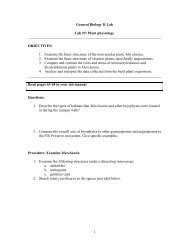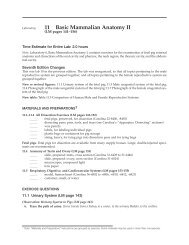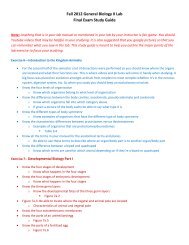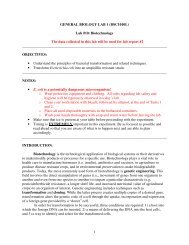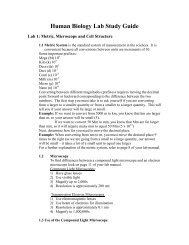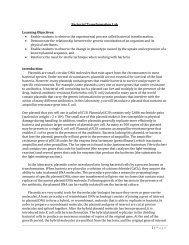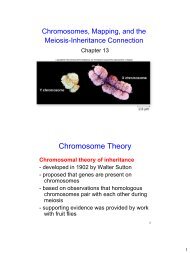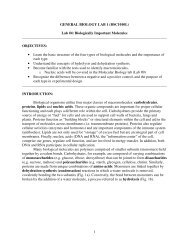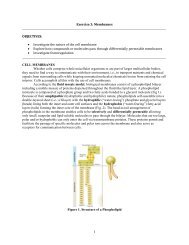Evolution (PCB 4674). Chapter 2. The evidence for evolution
Evolution (PCB 4674). Chapter 2. The evidence for evolution
Evolution (PCB 4674). Chapter 2. The evidence for evolution
You also want an ePaper? Increase the reach of your titles
YUMPU automatically turns print PDFs into web optimized ePapers that Google loves.
EVOLUTION/LECTURE1<br />
"Species have changed through time and are related by descent from a<br />
common ancestor"<br />
This statement is the backbone of the theory of <strong>evolution</strong> as exposed by Charles Darwin.<br />
1.8. In this chapter we will explore first data that challenges the three main statements of<br />
the <strong>The</strong>ory of Special Creation indicated in 1.5 (i.e. species are independent, immutable<br />
and recent). In the second half of the chapter we will introduce several data drawn from<br />
different fields of scientific inquiry that supports predictions of the <strong>The</strong>ory of <strong>Evolution</strong><br />
<strong>2.</strong>- Relatedness of life <strong>for</strong>ms and homology<br />
<strong>2.</strong>1.- <strong>The</strong> <strong>The</strong>ory of Special Creation contends that each species was created<br />
independently. In contrast the <strong>The</strong>ory of <strong>Evolution</strong> contends that organisms are related by<br />
common ancestry.<br />
<strong>2.</strong><strong>2.</strong>- Results from the fields of comparative anatomy and embryology demonstrate that<br />
fundamental similarities underlie the obvious physical differences among species. Early<br />
researchers called this phenomenon homology. Two good examples can be found in the<br />
vertebrate skeletons and in flower organs. If species share common ancestors they also<br />
should share many characters of their ancestors. Homologous characters reflect the common<br />
ancestry of species<br />
<strong>2.</strong>3.- Vertebrates <strong>for</strong>elimbs are used <strong>for</strong> different functions, but they ALL HAVE the same<br />
sequence and arrangement of bones.<br />
Figure <strong>2.</strong>1.a.: Vertebrate homologous bones. Homologous bones<br />
are colored or shaded in the same way, and are labeled on the<br />
human arm<br />
file:///E|/CH2-EVIDENCE-SPRING-2008/CHAPTER2_SPR_2008.HTML[12/8/2011 11:22:00 AM]



